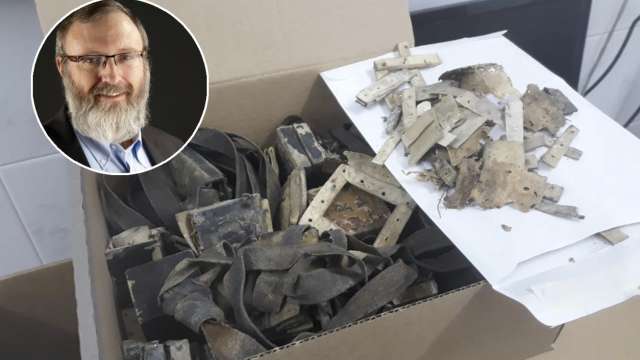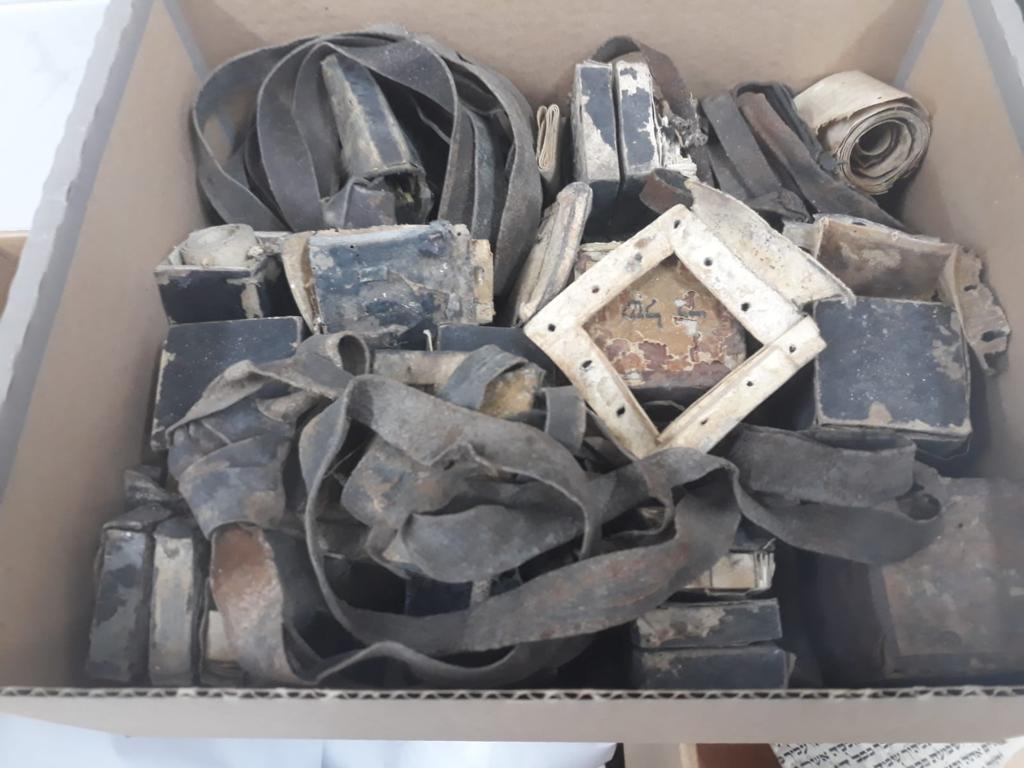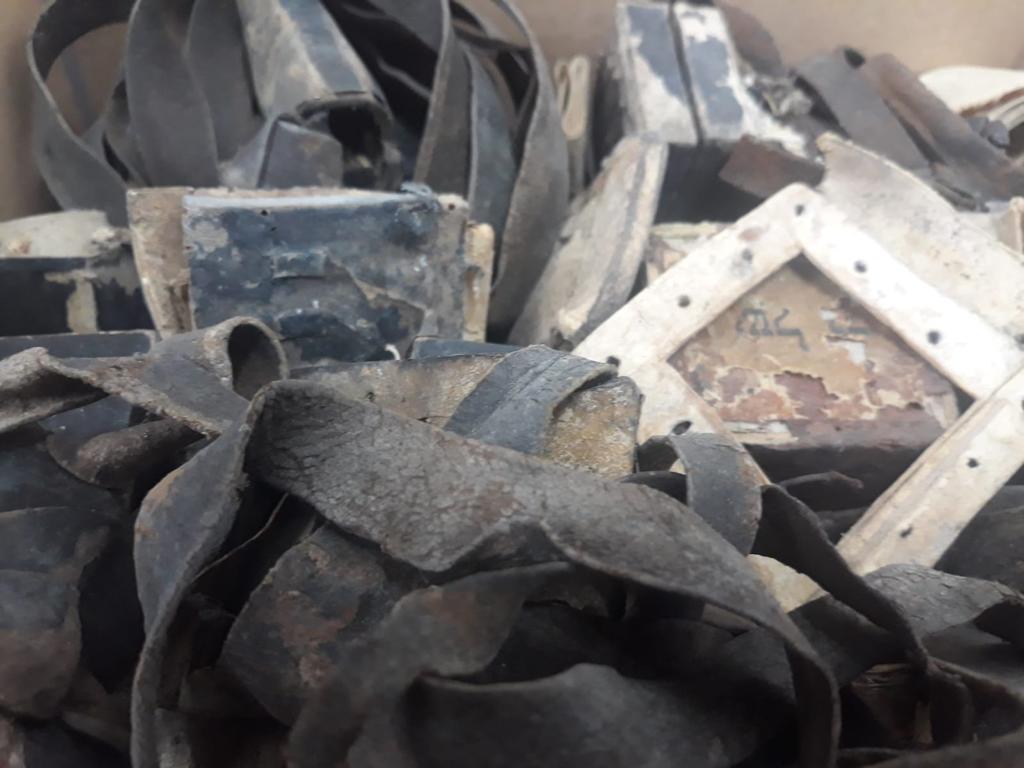
No one prepared Rabbi Avraham Krieger, head of the Shem Olam Institute, for the sensational discovery that is about to be revealed through his institute. In fact, it was one of the researchers working on behalf of the institute in Poland who was notified that a building in the building where renovations are currently underway, was discovered by chance when entering a bunker. One of the workers went into the bunker to evacuate it, then discovered a large box near the wall containing dozens of pairs of tefillin and arrangements.
“It’s really exciting,” Rabbi Krieger told Hidbraut. “Every time I think we have already discovered everything that can be discovered and revealed all the findings that indicate the existence of Jewish life during the Holocaust, and then it turns out that we see only the tip of the iceberg. The findings that indicate Jewish life during the Holocaust are endless, and each time we re-excite when we encounter In them and understand through them how the Jews lived and coped during the difficult years of the war. “
Excited by the findings
On the tefillin found, Rabbi Krieger relates: “According to a careful examination we made, it seems that they were made about a hundred years ago, and throughout these years were preserved by the Jews who fiercely defended them, even though they knew it could endanger their lives.”
And here he wants to emphasize an important thing: “The narrative today on the subject of the Holocaust is mainly centered around murder and extermination, in other words – tragedy. We, at Shem Olam Every second out of the inferno. These are people, individuals and also the public, who have been preoccupied with religious, value and moral questions. Some have succeeded and some have failed, but it is clear that there was tremendous power that reflected the Jewish inner world shaped by thousands of years of existence. .

“Unfortunately, this focus of things is often absent from writings and historical research. This is why for the 20 years that the Shem Olam Institute has existed, we employ researchers on our behalf who sit in various countries around the world and are constantly looking for documents and objects, especially those that reflect something of the Jews’ inner world.” We are less concerned with finding findings that indicate the intensity of the tragedy, because many have already dealt with it and it is indeed necessary to continue, but we also need someone to look from the point we have adopted. This is why we keep our eyes open to discover objects and documents that contribute to both historical reflection and historical property. “To balance the image”.
According to Krieger, this specific find of dozens of pairs of tefillin in the Warsaw Sword Ghetto is one of the most exciting finds they have encountered in recent years. “The tefillin was found in an area that had no structure on it throughout the war, but had an underground bunker, as we know from many buildings in Poland. Recently they started digging to strengthen the foundations for a large structure they wanted to build, and so the bunker with ‘treasure’ was discovered.”
Tefillin inside the inferno
Do you have an estimate of how the tefillin got to the structure?
“We tried to investigate the issue with the help of survivors from Warsaw. As we shall see, the area where the bunker existed was in the large ghetto, exactly where there was a crossing point between parts of the ghetto. People who wanted to move from one part to another in the ghetto, would pass through this bunker. “Possibilities – either the Jews who fought during the uprising kept the tefillin there and kept it until the end of the uprising, or it was a kind of improvised synagogue.
Can you tell who the tefillin belongs to? Do the names of the owners appear on them?
“Names may have appeared on the cases, but we can not see that the cases were completely disintegrated and not preserved. By the way, some of the tefillin we found were open, because they were probably opened by local Poles after the war, because they thought they hid treasures, but most are well preserved. To be impressed by them. “
It is important for Rabbi Krieger to emphasize: “When we hold the tefillin in our hands, we get a perspective on what happened in the ghetto in those years. Because when we talk about the Warsaw ghetto there is an image of victory, heroism and rebellion, but it is important to remember that physical heroism has underground heroism. The Jewish spirit and psychic power that the Germans have failed to break.These objects we find all the time, are accompanied by this insight.

“This week is International Holocaust Remembrance Day,” Krieger continues. “There is a tendency in the world to dim the Jewish place and make tragedy universal. But we must remember that our situation cannot be compared to that of any people, because it is through the Jewish people that our special power as a nation is revealed.” “That can be a light and a candle to every person in the world, with codes of values, both traditional and humane, precisely in such difficult moments.”
And what do you think to do with the tefillin found?
“The tefillin will be on display at Shem Olam. We have an educational project called ‘From childhood to adulthood’, in which we accompany boys and girls of Bar Mitzvah and Bat Mitzvah age. We thought one of the exciting things we could offer to boys celebrating Bar Mitzvah is to have the privilege of “The hand is a pair of tefillin like this. This is how the boy will feel when he connects to the strength of the spirit that was then in the past, and draws strength from it to our day.”